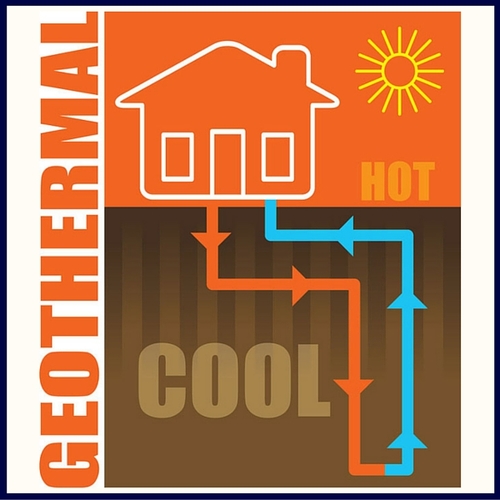CALL TODAY 1-800-441-6281
CALL TODAY 1-800-441-6281

How does Geothermal Heat AND Cool Homes
- Tags:
- geothermal wells

In New England, temperatures between seasons can vary pretty dramatically. Winters here can be super frigid, filled with inches or even feet of snow while the warmer months scan bring scorching summer sun. While many people may try to "wait it out", that method rarely lends itself to a comfortable living all year long. For many people, the creature comforts that are found in heating and air conditioning are a necessity, even if just for a portion of the year.
Traditional heating and cooling systems can use a lot of energy, which can translate into significant costs. These systems are often dependent on the temperature and conditions of the air, which obviously fluctuate throughout the day, season, and region of the home for which they're responsible.
Geothermal systems, however, are not dependent on the external temperature of the air. Rather, they rely on the earth's internal temperature, which stays consistently around fifty degrees regardless of what the weather is like above the ground. Because the temperature remains consistent, and it's right in the middle of the thermometer, it is easy for geothermal systems to provide hot and cool air to homes. Since the temperature from which the energy is created stays at a steady and even temperature, it doesn't take as much effort to cool or heat the air that results in the final product.
The process is fairly simple, but it can make a big difference in the cost of heating and cooling a home. Pipes are placed into the ground and filled with water. Because the earth's temperature stays at about fifty degrees, the water that is retained in these pipes is already lukewarm. Rather than using forced air, the water finds its way through the pumps that heat or cool the water. The duct work that is in place in the home then receives the cooled or heated air after it has passed through the pumps.
This one system allows consumers to utilize its service throughout the entire year. Depending on the year, the geothermal system will either enable the water to pass through a refrigerant, which then cools the water and ultimately produces cool air, or the water will absorb the heat emitted by the refrigerant to provide warm air during cold seasons. A condenser and evaporator coils receive the warmed or cooled water. The home is then cooled or heated as air in the ducts blows over these coils and pipes, producing a comfortable environment for the adults, kids, and pets that reside in the house.
In the end, the cost is just as economically friendly as is the design itself. Geothermal units can be placed in many homes, businesses, and buildings.
RESIDENTIAL GEOTHERMAL CONSTRUCTION
If you are interested in learning about how geothermal energy can help your home stay cool in the summer and warm in the winter, contact a member of our team at Skillings & Sons. We're always happy to help you learn more about how geothermal energy can assist you in heat AND cool your home!
Ever wonder how a geothermal system works, what one costs and just how much money you can save on your heating and cooling costs? This year's winter was brutally cold, and the pain was made more unbearable with every new heating bill. The good news is that geothermal heat pump systems can save you significant money on your heating bill. Add to that a tax credit of up to 30% if you purchase a system within two years and geothermally becomes very attractive.
• The cost of a residential geothermal heat pumps system
• How geothermal systems work
• The average annual savings and lifetime value of a geothermal system
Skillings & Sons has brought cutting edge water well technology into residential homes in both New Hampshire and Massachusetts since 1971. Get the facts on geothermal from a trusted, third generation company.
Contact a Skilling & Sons Geothermal expert for a consultation 1 (800) 441-6281

